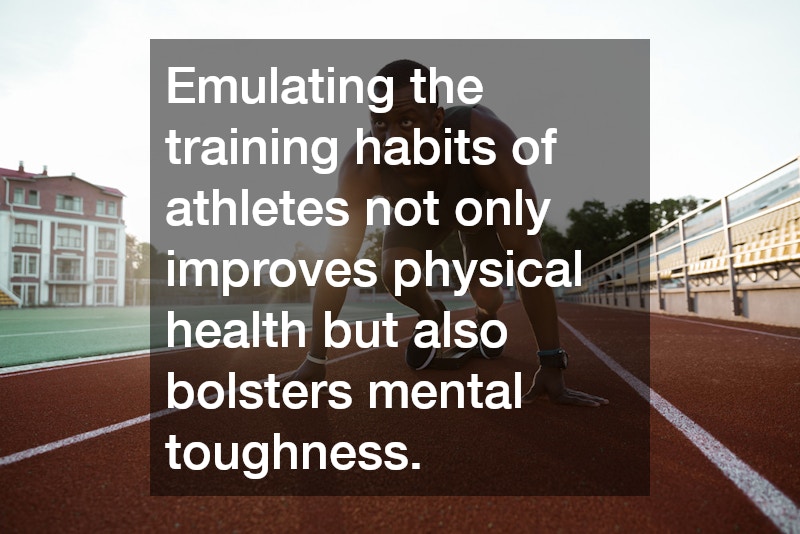If you’ve ever watched a professional athlete and wondered about their remarkable fitness, you’re not alone. Athletes maintain their extraordinary physical shape by adhering to rigorous athletic training programs designed to optimize performance and endurance. This article will guide you on how to incorporate such programs into your routine and enhance your own exercise practices, even if you’re not aiming to compete professionally.
The Importance of a Tailored Athletic Training Program
To exercise like an athlete, it’s essential to follow a structured athletic training program. These programs are meticulously crafted, taking into account various aspects such as strength, agility, speed, and endurance.
By customizing a plan to fit your needs, you ensure balanced development across all fitness areas, which helps to minimize injuries and improve overall athletic performance.
A key component of an effective athletic training program is its focus on both physical and mental resilience. Just as athletes push their physical limits, they also develop mental fortitude, allowing them to overcome challenges and maintain a competitive edge. Building mental toughness is integral to athletic success, emphasizing the importance of combining psychological exercises with physical training.
Moreover, tailoring your program allows for the inclusion of recovery and nutrition plans, crucial for achieving results akin to professional athletes. Recovery techniques such as proper sleep, hydration, and active rest play significant roles in injury prevention and long-term performance improvements. A well-rounded nutritional plan ensures that your body receives the fuel it needs to sustain vigorous training sessions.
Components of an Effective Athletic Training Program
An athletic training program comprises several key components: strength training, cardiovascular conditioning, agility work, and flexibility exercises. Strength training involves lifting weights or resistance exercises that are vital for building muscle mass and enhancing performance. Cardiovascular conditioning, including workouts like running or cycling, improves heart health, enabling better oxygen flow to muscles and increasing stamina.
Agility work focuses on coordination, balance, and quickness, which are essential for athletes who require rapid changes in movement and direction. Drills that improve foot speed and coordination, such as ladder drills and cone drills, are commonly used. Pairing agility exercises with speed-focused training helps in developing explosive power critical in sports performance.
Flexibility exercises, often overlooked, are fundamental to athletic training as they improve range of motion and reduce injury risks. Incorporating yoga or dynamic stretching into your routine promotes better joint health and prevents muscular imbalances. Flexibility ensures that an athlete’s body can move efficiently without restrictions or undue strain.
Adapting Athletic Training Principles to Your Routine
To integrate athletic training principles into your routine, start by setting clear, achievable goals, similar to athletes. This might involve targeting specific fitness objectives such as running a certain distance, lifting a new weight, or mastering new skills. Setting structured goals keeps you motivated and focused, mirroring an athlete’s disciplined approach to training.
Implementing periodization in your training allows for continued progress while preventing burnout. Periodization involves breaking your training into cycles that vary intensity and volume, ensuring that you progressively overload your body while allowing adequate recovery. By continuously adjusting your programs, much like athletes, you can achieve and maintain peak performance.
Tracking progress and adjusting accordingly is another vital component of exercising like an athlete. Use tools like fitness apps or journals to record your workouts, monitor achievements, and identify areas needing improvement. This proactive approach to managing your training helps you stay on track and fully leverage the benefits of an athletic training program.
In summary, exercising like an athlete requires dedication, discipline, and a strategic approach to training. By adopting an athletic training program, customizing it to your own needs, and incorporating essential elements such as strength, agility, and flexibility, you can significantly enhance your fitness levels. Remember that consistent effort and maintaining balance between training and recovery are key to reaping lasting benefits.
Emulating the training habits of athletes not only improves physical health but also bolsters mental toughness, helping you tackle obstacles with resilience. Whether you’re an aspiring athlete or simply seeking better health, embracing these principles offers a rewarding path to success. With determination and an informed approach, you can exercise like an athlete and achieve remarkable fitness transformations.
Ultimately, exercising like an athlete is not just about mimicking their routines but understanding and implementing the underlying principles that drive their success. By integrating these methods into your lifestyle, you position yourself to meet and exceed your fitness ambitions, enjoying the journey to becoming the best version of yourself.
.


